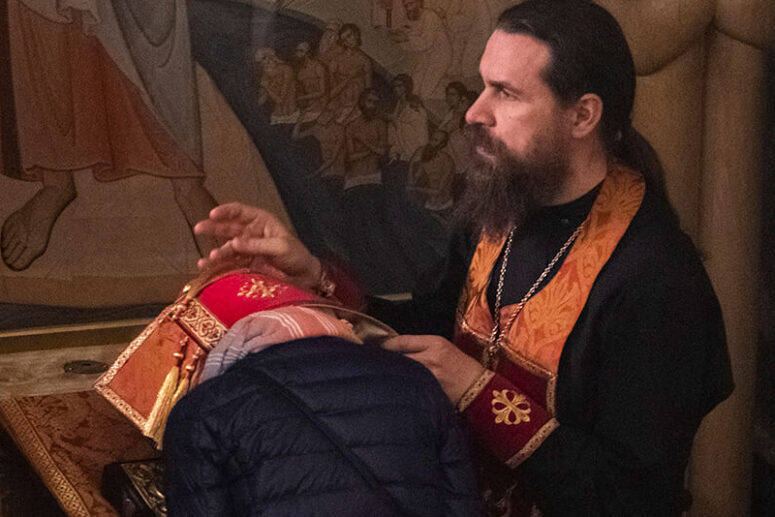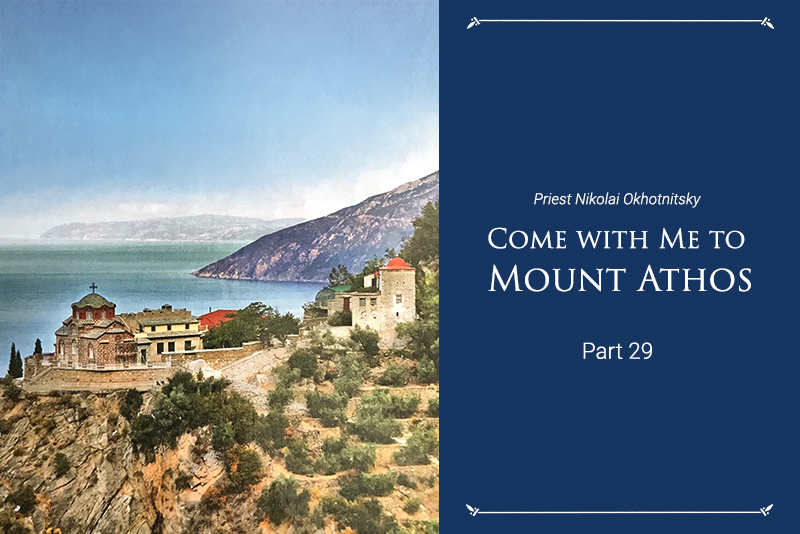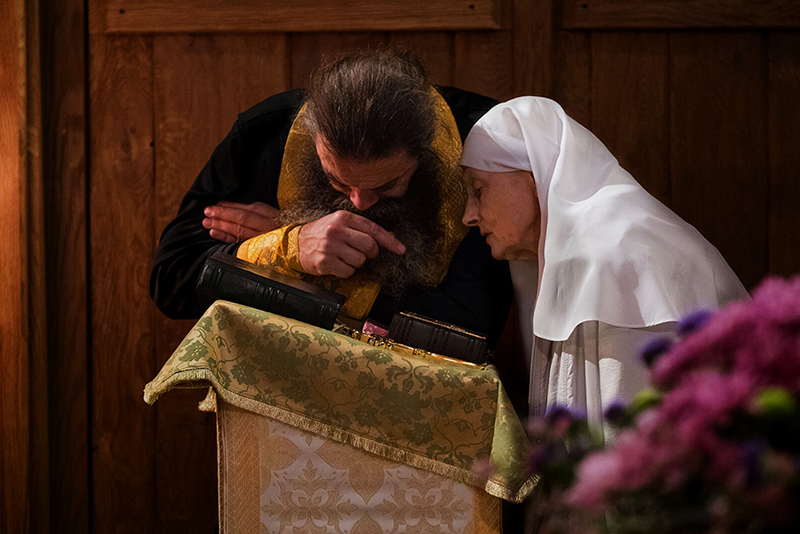
Christ vested in His disciples the authority to forgive the sins of others (John 20:23). The sacrament of confession has been performed at church since ancient times. We find references to it in the gospel. For example, as written in the Gospel of Mark (1:5), the whole Judean countryside and all the people of Jerusalem went out to John the Baptist to confessing their sins. – The confession was followed by a prayer for reconciliation with the Lord, asking Him to grant the penitent forgiveness and reunite him with the Church. Prayer formulas for the remission of the sins have evolved, and become a part of the liturgical tradition for the Christian churches Let us review some of those and take note of some distinctions among the different Churches.
Eastern Orthodox
Across the Eastern orthodox churches, several variants of the prayer for the remission of the sins are used. In the tradition of the Russian Orthodox church, the prayer reads: May our Lord and God, Jesus Christ, through the grace and bounties of His love towards mankind, forgive you, my child, N., all your transgressions. And, I, His unworthy Priest, through the power given unto me by Him, do forgive and absolve you from all your sins. In the Name of the Father, and of the Son, and of the Holy Spirit. Amen. This prayer bears some affinity with the appropriate Latin text. Piotr Mohyla was among the most prominent church fathers of old who introduced the elements of Latinism into Russian church practice. The text, however, is still dogmatically correct, as it is grounded in the affirmation by the Lord of the power of the apostles to forgive and absolve sins. In the text, the penitent receives forgiveness from Christ and the priest as the father of the community of the church from which the penitent had fallen by sinning; it also underlines the unworthiness of the priest and that his power to forgive sins emanates from the Lord.
In the pre-Nicon times, the Slavic Trebniks had the following text: “Your transgressions, my child N, are herewith on my shoulders, and may our Lord Jesus Christ not hold these against you when He comes in His glory on Judgement Day”. At this point, the penitent placed his hand on the neck of the priest, as if likening him to the proverbial scapegoat (Leviticus 16), chosen by lot to carry the transgressions and infirmities of the penitent layman. As we may see, the former text is more dogmatically correct.
The Greek church uses the text of the prayer that is used in Russian Orthodox practice for the communion of the sick. “May God Who pardoned David through Nathan the Prophet when he confessed his sins, Peter who wept bitterly for his denial, the Harlot weeping at His feet, the Publican and the Prodigal; May our same Merciful and loving God Pardon your every transgression, which you have committed, whether by word or deed or thought. For You are He who has the power to forgive sins, Christ our God, and to You we offer up glory together with Your eternal Father and Your holy, good, and life-creating Spirit, now and forever and to the ages of ages. Amen.”
The prayer asks God to forgive the transgressions of the penitent like He had forgiven Peter, the Harlot and the Publican who repented before Him. It de-emphasises the power of the priest to forgive sins, and accentuates the power of God to do so, with the words “You are He who has the power to forgive sins, Christ our God”.
In general, all Eastern Orthodox churches base their sacraments of repentance in the Byzantine tradition, with the notable exception of the practices of the Russian Orthodox Church adapted by Piotr Mohyla. These prayer texts tend to minimise the role of the priest, sometimes for apologetic purposes. The order of the sacrament of confession stresses the role of the priest as a mere witness of the repentance of the penitent before the Lord (“I am only a witness, and I testify before Him” – Trebnik). Thus, the Byzantine tradition underlines the theme of the sinner’s reconciliation and reunification with the Church.
“Let us pray to the Lord. O Lord and god of the salvation of Your servants, gracious, and merciful, and long-suffering, Who is grieved at our misdeeds, Who desires not the death of the sinner, but rather that he should be converted and live, have mercy now upon Your servant (handmaid) N.; grant him (her) true penitence, and the pardon and forgiveness of sins; remit to him (her) all transgressions, both voluntary and involuntary; reconcile and unite him (her) with Your Holy Church through Jesus Christ Our Lord, with Whom be power and glory ascribed unto You, now and ever, and to ages of ages. Amen.”
Incidentally, the Byzantine prayer is the preferred variant of the prayer of absolution among some priests.
The Armenian Church
In its practice, the Armenian Church uses a distinct text of the prayer of absolution in the sacrament of repentance. Before repentance, the Armenian church calls for the penitent to fast, admit their sins, and pray for forgiveness. Before absolution, the penitent reads a prayer that enumerates all the different sins (similar to the practice of some Eastern Orthodox Churches during group confessions, where, as distinct from the Armenian church, the list of the sins is read by the priest). Then the priest says the following text: “May God who loves mankind have mercy on you and forgive all of your sins, both those which you have confessed as well as those which you have forgotten. Therefore, with the priestly authority committed to me and by the Lord’s command that ‘whatever you forgive on earth shall be forgiven in heaven’; by His very word I absolve you of all participation in the sin committed in thought, in word, and in deed, in the name of the Father, and of the Son, and of the Holy Spirit, and I reinstate you in the sacraments of the Holy Church, that whatever you may do, may be accounted to you for good and for the glory in the life to come.
Amen”.
The part of the text that declares absolution is similar to the prayer used in the Catholic tradition: “through the ministry of the Church may God give you pardon and peace and I absolve you from your sins in the name of the Father, and of the Son, and of the Holy Spirit.” In the practice of the Armenian Church, the prayer also asks God for the forgiveness of the sinner for his sins, confessed and unconfessed and underline the power of the priest to absolve the penitents sin. The atonement of the sins is seen as the renewal of the penitents participation in the sacraments of the Church.
Coptic Church
In Coptic churches, penitents begin by reading Psalm 50 and then proceed to recount to the priest all of their transgressions. The presbyter places a cross on the penitents head, symbolising the blood that Jesus said on the Cross for the redemption of our sins. Then he proceeds to read three prayers. The first two are similar in content and meaning to the prayers in the practice of the Orthodox Church (“God it was who forgave David through Nathan the Prophet” and “Lord God, Lamb of God, Son of the Father who take away the sin of the world…). They are pleas for God’s mercy and for Him giving authority unto us “to tread upon serpents and scorpions” (Luke 10:19) and to avoid sin. – In the second prayer, we ask the Lord to “save our souls from corruption” and “lift the penitent who has bowed his head beneath His hand, in good conduct and adorn him with virtues.”
Finally, the priest reads the third and final prayer formula for the absolution and remission of the sins. “Master, Lord Jesus Christ the only-begotten Son and Logos of God the Father, Who has broken every bond of our sins through His saving, life-giving sufferings; Who breathed into the faces of His holy disciples and saintly apostles, and said to them, “Receive the Holy Spirit. Whose sins you will remit, they are remitted to them, and whose sins you will retain, they shall be retained.” Now, our Master, through Your holy apostles, You have also deigned to give grace to their successors in the priestly ministry in the bosom of your Holy Church, the faculty of remitting sins on earth, of binding and to loosing every bond of iniquity. Now, also, we pray and entreat Your goodness, O Lover of Mankind, for Your servant, N., whose head is bowed in the presence of Your Holy Glory, that he (she) may obtain your mercy and that you loose every bond of his (her) sins, which he (she) has committed against You, whether knowingly or unknowingly, or by fear, in word, in deed, or by weakness. You, O Master, who knows the weakness of men, as a good and loving God, grant us the forgiveness of our sins + (The priest crosses himself). Bless us, purify us, absolve us and absolve your servant N (The priest crosses the penitent). Fill us with Your fear, and straighten us unto Your holy, good will, for You are our God, and all glory, honour, dominion, and adoration are due unto You, with Your good Father, and the Holy Spirit, Consubstantial with You, now and forever, and unto the age of all ages. Amen”.
It is also remarkable that, in the prayer of absolution, the priest does not separate himself from the sinner, and asks the Lord to forgive his sins along with the penitent. The prayer refers to the power of the Apostles and their successors to forgive sins, but no part of the text declares that the sins are forgiven.
Overall, despite differences in some specific parts, the prayers of absolution contain three common elements – a plea to God for forgiveness, a reference to the power of the priest to absolve and atone the sins given to him by Christ, and the absolution of the sins. The latter may be explicit (“I do absolve and atone”, as in Armenian and Russian church practices) or implicit, as in the practice of the Coptic Church.




